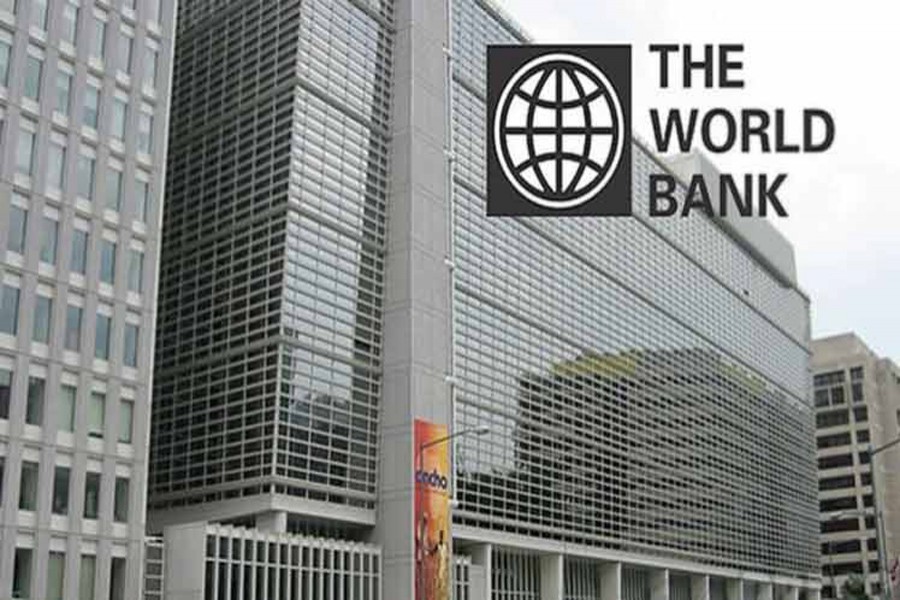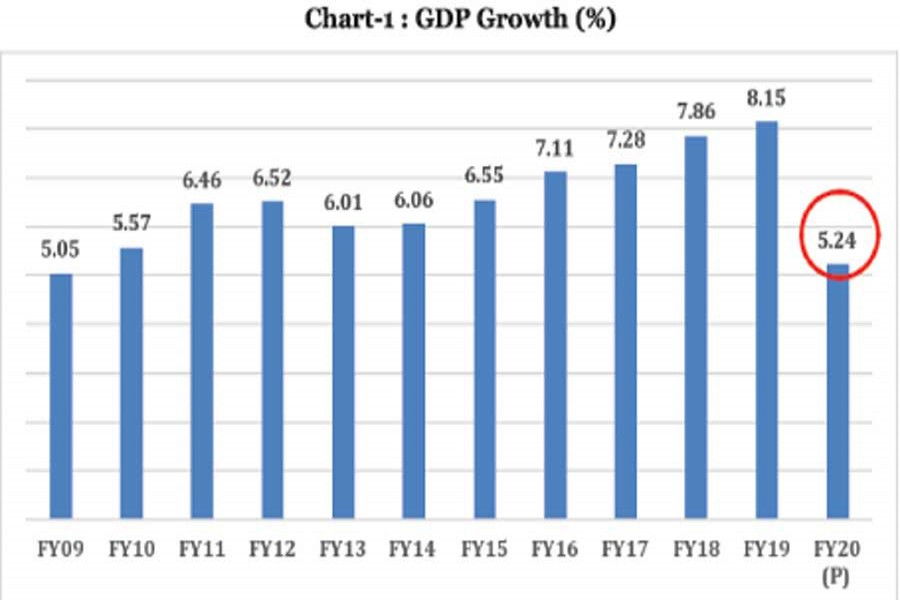Destranator
SENIOR MEMBER

- Joined
- Jul 20, 2018
- Messages
- 3,794
- Reaction score
- -3
- Country
- Location
Bangladesh Bureau of Statistics (BBS) is the main economic statistics agency of Bangladesh responsible for collecting necessary economic data to calculate the GDP.
Due to the sheer amount of data collection and calculations involved in coming up with GDP figures, multinational agencies such as IMF, World Bank, CIA and ADB are forced to rely on BBS statistics as the basis of their own forecasts despite raising concerns on the validity of BBS statistics on many occasions. The inclusion of BBS-derived data into the comparision tables of these multinational agencies often creates the false impression among less informed Bangladeshis that these figures are verified and validated by them which could not be further from the truth.
It has become quite fashionable for some people to throw around GDP stats to brag about Bangladesh's economic development and belittle other countries. While there is no doubt about the significant economic strides Bangladesh has made since 1990 and particularly in the last 10 years, there remain credible concerns regarding tampering by BBS to inflate GDP stats for political purposes.
The purpose of this thread is for readers to keep informed of the concerns raised by experts over the years in order to be able to form informed opinions about Bangladesh's GDP figures.
Historical articles will be posted.
......................
GDP decided first, calculations done later
By Riti Ibrahim
The Bangladesh Bureau of Statistics (BBS) has provisionally calculated the growth of 5.24 per cent for the gross domestic product (GDP) in the last 2019-20 fiscal year. Economists and private research organisations claim that this growth calculation does not match reality. Questions have also been raised about the competence of BBS. There have also been allegations of political interference in modifying and fabricating data and information generated by BBS. Riti Ibrahim, former secretary of the statistics and information management department of the planning ministry, spoke on the issue. Jahangir Shah transcribed her deliberation.
The Bangladesh Bureau of Statistics (BBS) has given a provisional account of the gross domestic product (GDP) of the previous financial year. This calculation has been made on the basis of information received till 31 March (first nine months of the financial year). Presumably, this provisional estimate was drawn up by BBS in the normal process just as in any other year.
The last three months of the financial year (April-June) remained static due to the coronavirus outbreak in the country. Remittance may have increased. But there is cause to be concerned as many have lost their jobs, many have been sent back to the country. In this situation, the GDP growth will not be as much as shown in the BBS provisional calculation for the whole financial year. This can be termed as an inflated estimate.
However, the few years that I was in charge, I did not allow this to happen. Especially during the census, I instructed that no eraser can be used. The first data found in the field level should be the final data. I do not understand why so much influence is exerted on GDP? GDP is not everything. Development in social sectors such as women's empowerment, health must also be taken into consideration.
The Department of Statistics and Information Management was formed to advise the BBS. It was well planned, but it was not enough. Those who have worked at BBS for a long time know a lot about statistics. They were once transferred to the Department of Statistics and Information Management. New officers were appointed to BBS. Most of them are non-professionals. I believe initiatives need to be taken to strengthen BBS.
*This analysis, originally published in Prothom Alo print edition, has been rewritten in English by Farjana Liaka

 en.prothomalo.com
en.prothomalo.com
Due to the sheer amount of data collection and calculations involved in coming up with GDP figures, multinational agencies such as IMF, World Bank, CIA and ADB are forced to rely on BBS statistics as the basis of their own forecasts despite raising concerns on the validity of BBS statistics on many occasions. The inclusion of BBS-derived data into the comparision tables of these multinational agencies often creates the false impression among less informed Bangladeshis that these figures are verified and validated by them which could not be further from the truth.
It has become quite fashionable for some people to throw around GDP stats to brag about Bangladesh's economic development and belittle other countries. While there is no doubt about the significant economic strides Bangladesh has made since 1990 and particularly in the last 10 years, there remain credible concerns regarding tampering by BBS to inflate GDP stats for political purposes.
The purpose of this thread is for readers to keep informed of the concerns raised by experts over the years in order to be able to form informed opinions about Bangladesh's GDP figures.
Historical articles will be posted.
......................
GDP decided first, calculations done later
By Riti Ibrahim
The Bangladesh Bureau of Statistics (BBS) has provisionally calculated the growth of 5.24 per cent for the gross domestic product (GDP) in the last 2019-20 fiscal year. Economists and private research organisations claim that this growth calculation does not match reality. Questions have also been raised about the competence of BBS. There have also been allegations of political interference in modifying and fabricating data and information generated by BBS. Riti Ibrahim, former secretary of the statistics and information management department of the planning ministry, spoke on the issue. Jahangir Shah transcribed her deliberation.
The Bangladesh Bureau of Statistics (BBS) has given a provisional account of the gross domestic product (GDP) of the previous financial year. This calculation has been made on the basis of information received till 31 March (first nine months of the financial year). Presumably, this provisional estimate was drawn up by BBS in the normal process just as in any other year.
The last three months of the financial year (April-June) remained static due to the coronavirus outbreak in the country. Remittance may have increased. But there is cause to be concerned as many have lost their jobs, many have been sent back to the country. In this situation, the GDP growth will not be as much as shown in the BBS provisional calculation for the whole financial year. This can be termed as an inflated estimate.
I saw at the beginning of my career that it is decided beforehand of how much GDP growth will be announced to the public. Later this was somehow fixed by calculating backwards.BBS has its weaknesses. There are very few people who have degrees in statistics. The major setback is that there are no statisticians of that quality who will guide BBS.
However, the few years that I was in charge, I did not allow this to happen. Especially during the census, I instructed that no eraser can be used. The first data found in the field level should be the final data. I do not understand why so much influence is exerted on GDP? GDP is not everything. Development in social sectors such as women's empowerment, health must also be taken into consideration.
BBS has its weaknesses. There are very few people who have degrees in statistics. The major setback is that there are no statisticians of that quality who will guide BBS. The consultants are all administration cadre officers. So there is considerable weakness at the advisory level. There is also a weakness in the method of collecting information in the field. Nobody seems to care about BBS data.New officers were appointed to BBS. Most of them are non-professionals. I believe initiatives need to be taken to strengthen BBS.
The Department of Statistics and Information Management was formed to advise the BBS. It was well planned, but it was not enough. Those who have worked at BBS for a long time know a lot about statistics. They were once transferred to the Department of Statistics and Information Management. New officers were appointed to BBS. Most of them are non-professionals. I believe initiatives need to be taken to strengthen BBS.
*This analysis, originally published in Prothom Alo print edition, has been rewritten in English by Farjana Liaka

GDP decided first, calculations done later
Questions have been raised about the competence of BBS. There have also been allegations of political interference in modifying and fabricating data and information generated by BBS
Last edited:



















